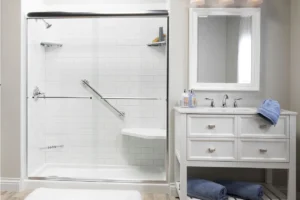Ready to Clean Your Jetted Bathtub and Want to Know How?
A clean bathtub isn’t just about appearances—it’s a matter of comfort, hygiene, and health. Soap scum, mildew, hard water residue, and bacteria can accumulate faster than you think. And if you own a jetted tub, you may be dealing with hidden grime deep inside the plumbing.
Whether you’re maintaining a standard tub or keeping your spa-like jetted tub sparkling, this comprehensive guide will walk you through the safest and most effective ways to clean every part of it—without damaging the surface or components.
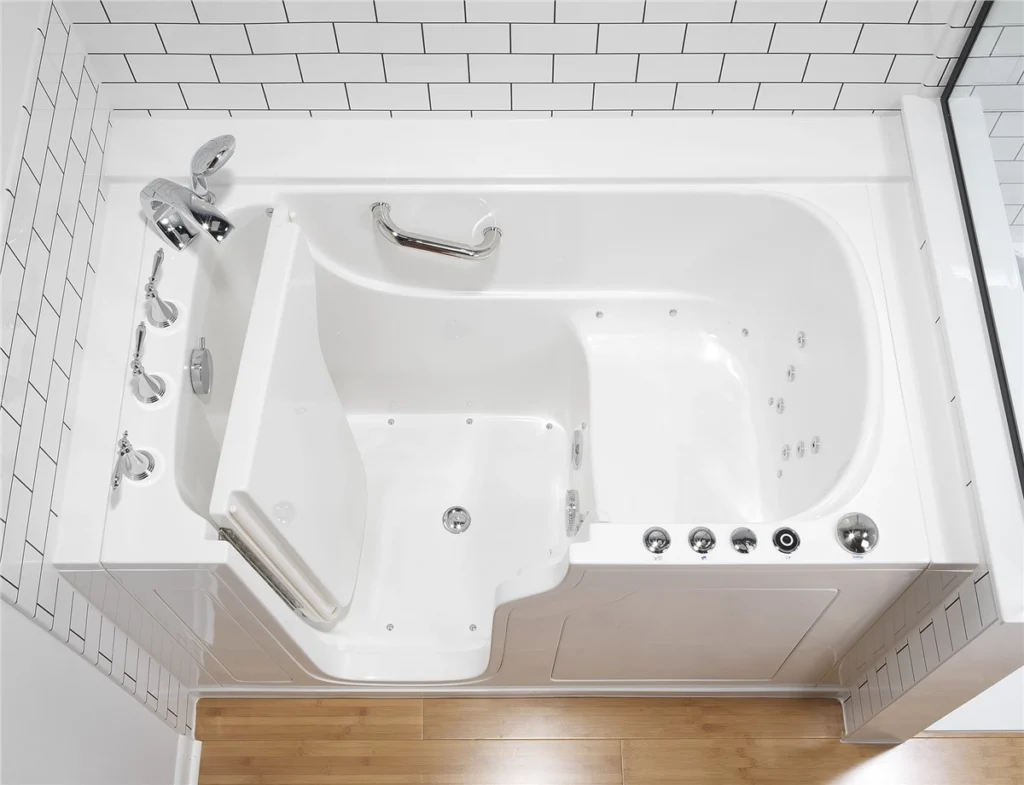
Why Cleaning Your Bathtub Matters
Bathtubs accumulate more than just water. Every bath leaves behind body oils, dirt, dead skin cells, shampoo and soap residues, and hard water deposits. Over time, this buildup leads to:
- Soap scum
- Mold and mildew
- Stains and discoloration
- Odors
- Bacterial growth
- Surface damage or etching
Cleaning your bathtub regularly ensures better hygiene, extends the tub’s lifespan, and keeps your bathroom looking fresh and inviting.
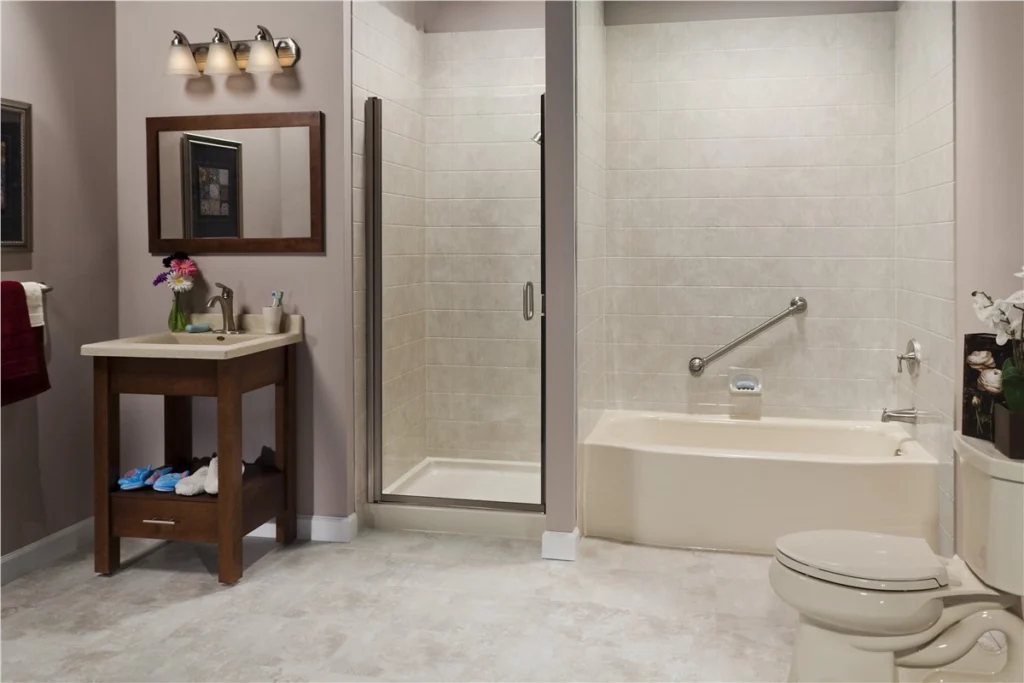
How Often Should You Clean Your Bathtub?
The frequency of cleaning depends on usage:
Tub Use Frequency | Recommended Cleaning Schedule |
Daily use | Light rinse after each use, deep clean weekly |
Weekly use | Deep clean biweekly |
Occasional/Guest use | Rinse monthly or before/after each use |
Light rinse = Rinse surfaces with warm water and wipe dry.
Deep clean = Use cleaners to remove soap scum, mineral deposits, and disinfect surfaces.
Step 1: Identify Your Tub Material
Before applying any cleaning product, determine your tub’s material. This is critical to avoid damage such as discoloration, scratching, or dulling.
Common Bathtub Materials:
- Porcelain-enameled cast iron or steel: Durable but vulnerable to harsh acids and abrasives.
- Acrylic: Lightweight, smooth, and easily scratched by abrasives or harsh chemicals.
- Fiberglass: Budget-friendly, prone to discoloration and damage from solvents and abrasives.
Step 2: Choose the Right Cleaner for Your Tub Type
Here’s what you should avoid using based on material:
Material | Avoid These Cleaners & Tools |
Porcelain-Enameled | Bleach, ammonia, vinegar, abrasive powders, steel wool |
Acrylic | Acetone, bleach, ammonia, paint thinner, harsh scrubbers |
Fiberglass | Acetone, bleach, scouring powders, stiff-bristle brushes |
Safer options:
- Mild dish soap
- Non-abrasive bathroom cleaners
- White vinegar (only on fiberglass if well diluted and rinsed)
- Baking soda (only on non-fiberglass surfaces)
How to Clean a Porcelain-Coated Cast Iron Bathtub
Best Method: Bar Keepers Friend + Soft Sponge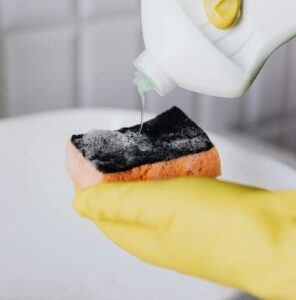
- Rinse the tub with warm water to remove loose debris.
- Sprinkle Bar Keepers Friend evenly across the surface.
- Use a damp sponge to create a paste, gently scrubbing in circular motions.
- Allow to sit for 5–10 minutes to break down grime.
- Rinse thoroughly and wipe dry with a microfiber cloth.
Bar Keepers Friend contains oxalic acid, which removes rust and stains effectively without scratching porcelain.
Optional: Use a Magic Eraser
For light surface stains or soap scum, a damp Magic Eraser works well on porcelain. Rinse thoroughly after use.
How to Clean an Acrylic or Fiberglass Bathtub
Best Everyday Method: Vinegar + Water Solution
- Mix 1 part distilled white vinegar with 2 parts water in a spray bottle.
- Spray generously across the tub.
- Allow it to sit for 10–15 minutes.
- Wipe with a soft sponge or microfiber cloth.
- Rinse with clean water and dry with a towel.
Avoid prolonged use of vinegar on fiberglass, as its acidity may dull the surface over time. Always rinse well.
Optional: Magic Eraser
Magic Eraser is ideal for acrylic tubs where buildup is mild. Avoid excessive pressure to prevent dulling the finish.
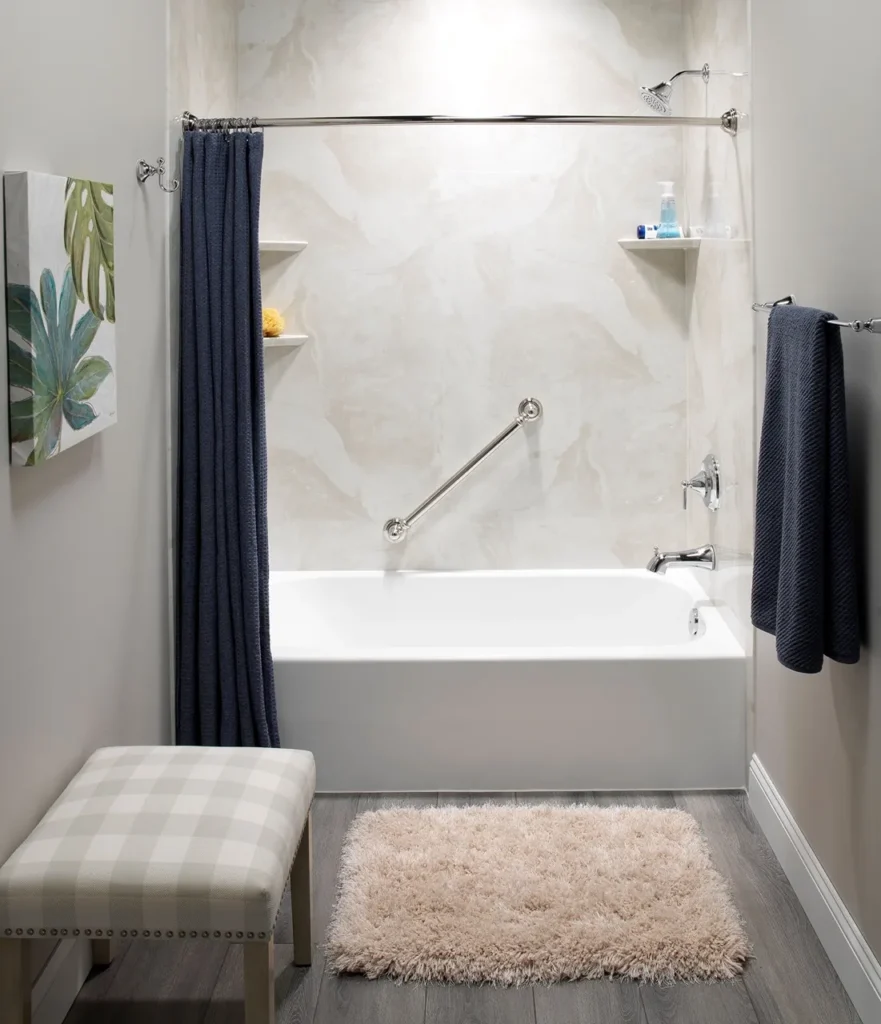
What to Do When Bathtub Stains Won’t Come Out
Tried all the typical methods—vinegar, baking soda, dish soap—and those ugly stains are still hanging on? When you’re dealing with stubborn, set-in stains that resist your go-to cleaning routine, it’s time to level up. Here’s what to try next, broken down by type of stain and tub-safe solutions.
Caution – Always spot-test harsh cleaners in a small, inconspicuous area first, and wear gloves and ensure proper ventilation when using chemical products.
Rust That Won’t Budge
If Bar Keepers Friend didn’t do the job and rust remains, try:
- Whink Rust Stain Remover
A fast-acting liquid specially formulated for rust. Safe on porcelain and ceramic but not recommended for fiberglass or acrylic. - Lime-A-Way or CLR (Calcium, Lime, Rust)
Strong acid-based cleaners that dissolve rust and mineral buildup. Use only on compatible materials (usually not for acrylic or fiberglass). Follow label directions strictly.
Pro Tip: If your rust stain is persistent and recurring, it might be due to an old drain or fixture. Replacing the offending hardware could permanently solve the issue.
Hard Water & Mineral Deposits That Won’t Wipe Away
Try these escalated solutions:
- Gel Toilet Bowl Cleaner (like Lysol Power Toilet Bowl Cleaner): Contains hydrochloric acid to dissolve mineral rings. Surprisingly effective on hard water stains—but used only on porcelain tubs, not acrylic or fiberglass.
- Commercial Descalers: Products like Rydlyme, ZEP Calcium, Lime & Rust Remover, or Bio-Clean offer stronger descaling power. These are especially useful if you have well water or older plumbing with persistent deposits.
Alternative Tactic: Use a razor blade scraper (on flat porcelain surfaces only) to gently remove crusted mineral buildup. Never do this on fiberglass or acrylic.
Soap Scum That Resists Every Scrub
If vinegar and dish soap aren’t cutting it:
- Scum Off Shower Cleaner (Earth Friendly Products)
Designed to remove long-standing soap film without harsh fumes. - Kaboom Foam-Tastic with OxiClean
Sprays on blue, turns white when it’s ready to scrub—great for visual confirmation on stubborn scum. - Goo Gone Soap Scum Cleaner
Oil-based formula cuts through waxy, greasy residue and can be safe on acrylic (verify on product label).
Power Tip: Let stronger cleaners dwell for at least 15–30 minutes before scrubbing. Time is a key factor in breaking down soap buildup.
Mold, Mildew, and Organic Stains That Won’t Go Away
These require a disinfecting approach if hydrogen peroxide doesn’t work:
- Concrobium Mold Control
Kills mold at the root and prevents regrowth. Odorless, bleach-free, and often safe for acrylic tubs. - RMR-86 Instant Mold & Mildew Remover
Commercial-grade formula with strong bleach content. Works fast on black mold, but test on your surface and ventilate heavily. - Clorox Clean-Up Cleaner + Bleach
Strong bleach-based cleaner for porcelain or ceramic surfaces only. Can erode finishes on softer tub materials.
Yellowing or Discoloration That Won’t Lift
If your tub is showing deep yellow or brown discoloration from age, iron stains, or chemical reactions:
- Hydrogen Peroxide Gel (or Hair Developer Cream, 20–40 volume)
Used in refinishing circles to reverse yellowing on porcelain and some acrylics. Apply, cover with plastic wrap, and leave for several hours before rinsing. - OxiClean Paste (powder + water)
Apply thick paste and let it sit overnight for tough discoloration. Rinse thoroughly. - Refinishing Kits
When staining is permanent, a DIY refinishing kit (like Rust-Oleum Tub & Tile Refinishing Kit) may restore your tub’s appearance. This is a last resort for surfaces beyond cleaning.
When It’s Time to Call a Pro
If you’ve tried commercial cleaners, scrubbing tools, and even refinishing kits without success, you may be dealing with:
- Deep-set iron leaching from old plumbing
- Tub finish erosion or permanent etching
- Mold contamination in jets or under caulk
A professional refinishing or reglazing service can restore porcelain, acrylic, or fiberglass tubs to a like-new appearance. For jetted tubs, a professional deep-jet sanitization can address internal bacterial buildup that you can’t reach with home methods.
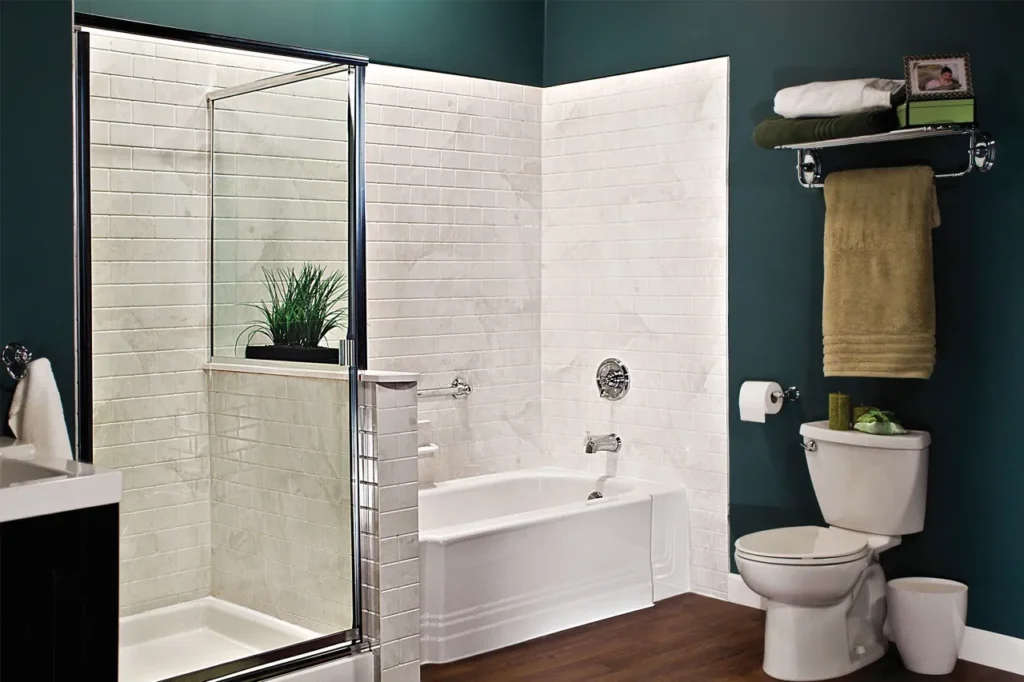
How to Clean Bathtub Jets (Jetted/Whirlpool Tubs)
Bathtub jets trap water, soap, skin oils, and bacteria deep in their internal plumbing. Left unchecked, this leads to odor, residue, and biofilm buildup. Here’s how to clean them properly.
After Every Use: Quick Rinse Cycle
- Drain used bathwater.
- Refill tub with clean warm water, 2–3 inches above jets.
- Run the jets for 5–10 minutes to flush out residues.
- Drain completely.
This prevents early buildup and keeps plumbing cleaner longer.
Monthly Maintenance: Light Jet Cleaning
- Fill the tub with hot water, covering the jets by 2–3 inches.
- Add: 2 tsp of low-foaming dishwashing liquid. (Optional) 1 cup of white vinegar for added cleaning power
- Run jets for 10–15 minutes.
- Drain, then refill with clean water.
- Run jets again for 5–10 minutes to rinse the system.
- Drain and dry the tub thoroughly.
Avoid bubble bath or high-sudsing soaps—they create foam buildup and clog jets.
Deep Cleaning Every 3–4 Months
If your jets haven’t been cleaned regularly or if odors persist, deep cleaning is necessary.
Bleach Method (If Manufacturer Permits)
- Fill the tub with hot water above the jets.
- Add: 2.5 cups of household bleach and 2 tsp of low-sudsing detergent
- Run jets for 15 minutes.
- Drain, refill with fresh water, and run jets again for 10 minutes to rinse.
- Drain and dry completely.
Check your owner’s manual first—some manufacturers warn against bleach, as it may dry out seals or damage internal gaskets.
Manual Jet Cleaning (Highly Recommended Quarterly)
For optimal results, combine flushes with manual scrubbing:
- Use a soft toothbrush or bottle brush to gently scrub inside each jet nozzle.
- Wipe the jet surround with a cloth soaked in vinegar.
- For grime behind the jet cover, use floss or a flexible brush.
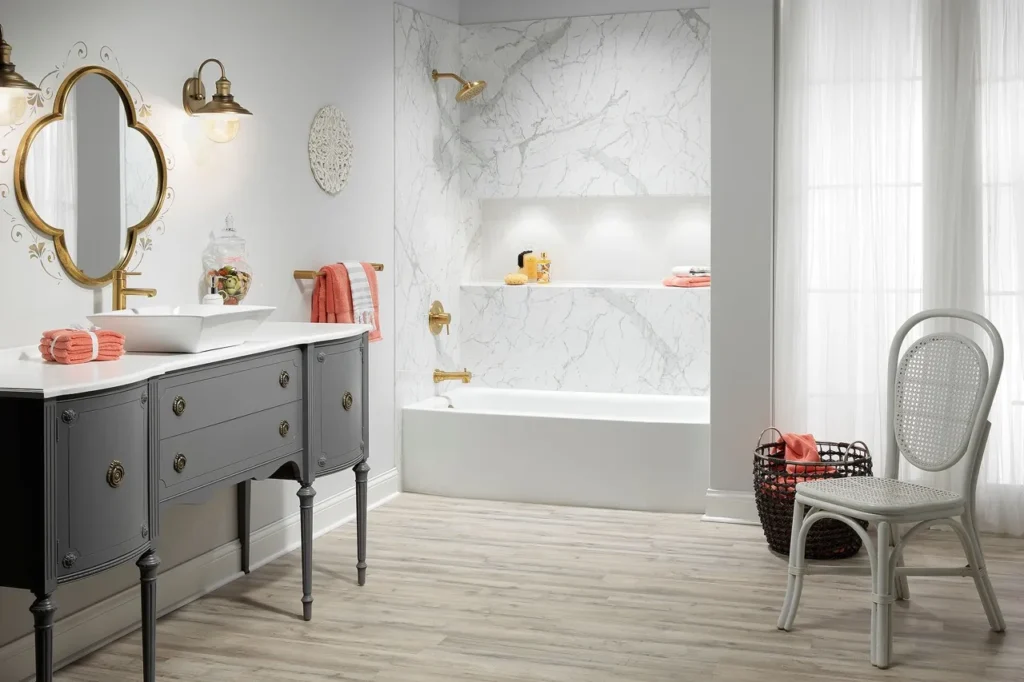
Should You Hire a Pro?
If you’ve moved into a home with a neglected jetted tub—or see black flakes, slime, or persistent smells—it may be time to call a professional jet cleaning service. They use specialized solutions and tools to clean deep into the piping system.
Once the tub is sanitized, regular monthly maintenance will be much easier.
Maintenance Tips to Keep Your Tub Cleaner Longer
- Always rinse after each bath to prevent residue buildup.
- Use a vinegar spray 2–3 times per week for quick wipe-downs.
- Run bathroom fans or open windows to reduce humidity and mildew.
- Brush around the drain weekly with a cleaning toothbrush.
- Inspect and replace cracked caulk to prevent mold growth.
- Avoid storing heavy or wet bottles on tub rims—they can cause chipping or mold rings.
Want More Bathtub Cleaning Advice?
Keeping your bathtub clean doesn’t have to be labor-intensive. With the right schedule, tools, and a little know-how, you can enjoy a tub that’s always sparkling and safe to soak in. Whether you have a classic porcelain soaker or a luxurious jetted tub, these cleaning methods help extend its life, preserve its beauty, and maintain a spa-like experience at home.
If you want more help with cleaning or determining if you need a new bathtub, get in touch with the professionals at Bath Planet of Eastern Michigan. To get in touch, call us at (810) 243-1077 or contact us online.



